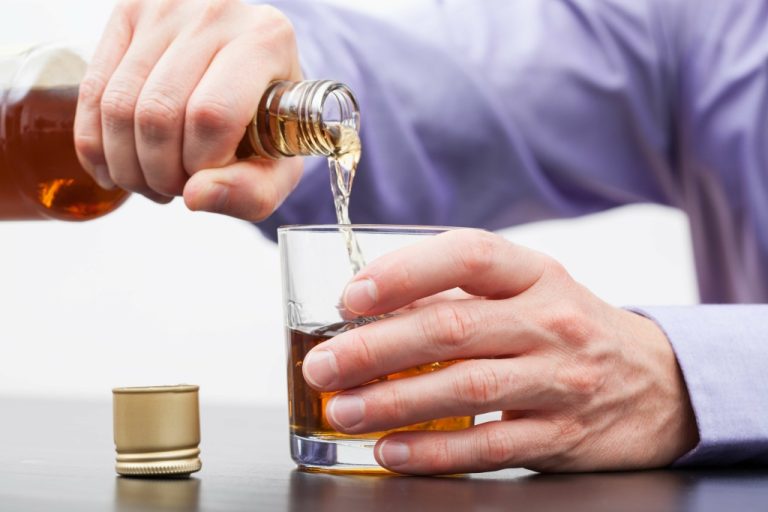The study comprised 234 young individuals aged 21–29 years recruited from the Pittsburgh metropolitan area using local fliers, internet ads, and the University of Pittsburgh’s Clinical Translational Science Institute (CTSI) Research Participant 10 ways to control high blood pressure without medication nch healthcare system Registry. They also assessed disruptions and theoretical reasons for these alterations, particularly those related to excessive drinking and drinking behaviors. YW, LR, YS, and WT take the responsibility for double check of the data analysis.
Repurposing a familiar drug for COVID-19
- Attributed reasons include 1) financial troubles due to job losses 2) uncertainty about the control of pandemic by the health system and 3) fear of life post pandemic [57].
- Amanda Roberts and Jim Rogers contributed to the study selection, data extraction, data analyses, and manuscript drafting.
- While hand sanitizer containing alcohol may kill the virus on surfaces, drinking alcohol doesn’t cure or prevent a COVID-19 infection.
- There is a need for a rethinking about policy changes like online alcohol delivery, which can be difficult to roll back [121].
- In addition, the CDC notes that if someone is moderately or severely immunocompromised, their response to the COVID-19 vaccine may be weaker than that of someone who is not immunocompromised.
Furthermore, a quantitative assessment of methodological quality was undertaken using the Joanna Briggs Institute Critical Appraisal Checklist for Studies Reporting Prevalence Data (Munn et al., 2015). We did not include studies if they were deemed “high risk” and were deficient in more than five of the out of nine of the quality criteria or had a small sample size (i.e. less than 100 due to a high possibility of selection bias). Disagreements regarding the inclusion of papers were resolved through discussion and there was no unresolved conflict. Fear and misinformation have generated a dangerous myth that consuming high-strength alcohol can kill the COVID-19 virus.
Alcohol Use During the COVID-19 Pandemic
Therefore, in a historical period characterized by a Covid-19 pandemic, doctors and all health professionals must motivate citizens not to consume alcohol or limit consumption to no more than one alcoholic unit/day (low risk consumption) (Scafato et al., 2020). This is especially true in the elderly population with polypathology (diabetes mellitus, heart disease, liver disease, etc.) and polytherapy. Perhaps most worrisome, studies show that chronic high alcohol consumption can significantly increase the risk of acute respiratory distress syndrome (ARDS), a potentially fatal respiratory condition in which fluid accumulates in the lungs. As there are some countries in the second wave at the time of this review, we need newer protocols and cohorts to study the long-term effects on mental health and addiction of different populations [123]. Alcohol users may not adhere to social distancing norms, increasing their risk of COVID-19. Anecdotal reports from Thailand suggest outbreaks of COVID-19 among families attending alcohol parties [88].
Sensitivity Analysis of the Association Between Alcohol Consumption and COVID-19 Risk
But because of that increase during the first year, researchers from the National Institute on Alcohol Abuse and Alcoholism (NIAAA) wanted to know whether there was a corresponding increase in alcohol-related deaths in 2020. In a hospital based observational study in Spain, among 2078 COVID-19 patients evaluated across 3 months, prevalence of SUDs was 1.3%, primarily among males (85%). Lockdown and sudden alcohol ban in many countries saw a sudden surge in complicated alcohol withdrawal [5▪▪,9]. There were also reports of alcohol withdrawal resulting in cases of suicides during the COVID-19 pandemic from India [10,11], raising potential dilemmas of forced abstinence [12].
However, researchers found that drinking returned to pre-pandemic levels by June 2021. There have been significant changes in alcohol policy globally in relation to the pandemic. Although many countries banned alcohol, some declared alcohol as an ‘essential’ commodity [94].
Although some studies observed an increase in drinking among women [27,35], others did not observe gender differences in alcohol use patterns [36]. Some studies report relative increase in drinking among black and non-Hispanic population [27,37▪▪]. In a study from the UK on persons with registered alcohol use disorders prelockdown [38], there was greater relapse secondary to lockdown; past abstinence attempts were not protective, and people who preventing nicotine poisoning in dogs relapsed had increased harmful drinking. One perhaps surprising risk factor in the included studies was parental status (those with children were more likely to increase their alcohol use during the pandemic). During lockdown, many parents had to ‘home-school’ their children alongside continuing to work at home. Study authors suggest that this may have led to role overload and distress and consequently heavier drinking (Sallie et al., 2020).
Thankfully, technology has made it easier to connect with our loved ones whenever and wherever we are. Use this time as an opportunity to speak with friends, family members, therapists, or anyone who may help you get through these uneasy times. As we all continue to socially distance ourselves, some programs have also begun offering virtual 12-Step meetings should you wish to join one online. The organization provides information and resources for people with questions and worries about alcohol use, and it also can help people find treatment, if needed. That can mean that someone who normally has one or two drinks a day may start drinking three more regularly.
The proportion of people consuming alcohol during the pandemic ranged from 21.7% to 72.9% in general population samples. Unlike alcohol use, there was a clear trend towards increased use of other substances use during the COVID-19 pandemic. The proportion of people consuming other substances during the pandemic ranged from 3.6% to 17.5% in the general population.
If you’re also struggling with alcohol, you may experience anxiety as a side effect of the disorder, thus enhancing your feelings of unease during this confusing time. Furthermore, not fully understanding the potential of what this virus can do, receiving contradictory information on television and online, and the fear of losing your financial support can also be scary. However, reaching for a glass of alcohol can enhance your anxiety or make it more likely for problematic patterns of alcohol use to start or continue. In the short term, alcohol consumption changes due to COVID-19 are expected to cause 100 additional deaths and 2,800 additional cases of liver failure by 2023. In US, online tweets related to alcohol blackouts significantly increased during the lockdown [99].
You can take a couple of steps to avoid contracting or transmitting the COVID-19 virus while drinking. Going “cold turkey” when you have a physical dependence on alcohol can be dangerous. The number of drunk driving fatalities in Arizona rose from 295 in 2020 to 421 in 2021, an alarming increase of 43%, mostly attributed to the restless boredom spurred by the pandemic.
In more serious cases, mixing alcohol with medications can cause internal bleeding and organ problems. For example, alcohol can mix with ibuprofen or acetaminophen to cause stomach problems and liver damage. For example, getting regular exercise and practicing stress reduction techniques can help reduce symptoms. It is also important to prevent feelings of isolation by reaching out to friends and family when possible. According to a 2015 article in the journal Alcohol Research, alcohol can prevent immune cells from working properly. Consult a healthcare professional about whether you can drink alcohol while using these medications.
Moreover, approximately 70% of all treatment center admissions in the Cornhusker State are due to alcohol use disorders. Recent data from the CDC found that over 1,100 Minnesotans died in 2021 as a result of binge drinking. This record figure is an extremely conservative estimate that doesn’t factor in drunk driving and other deaths indirectly caused by alcohol abuse, but it is still more than homicide and suicide combined.
Among patients with alcohol-related liver disease, caution is warranted related to use of medications, and outcomes appear to be worse. Five studies (11.1%) identified drug/ substance using longer questionnaires/instruments (seeTable 4). Twelve quantitative studies (26.7%) asked shorter or individual questions about self-reported frequency or behavioural changes of substance (e.g., Ballivian et al., 2020) and if any change was functionally related to the pandemic or any other reason (i.e., through stress; Czeisler et al., 2020). The remaining six studies (11.3%) used existing data and performed a time-series analysis linked to substance use (Glober et al., 2020, Leichtle et al., 2020, Marais et al., 2020, Ochalek et al., 2020, Slavova et al., 2020, Wainwright et al., 2020). Please note the terminology to denote the time-period of the review changes from phrases such ‘pandemic’, ‘lockdown’, ‘social-distancing’ or ‘quarantine’ depending on the terminology used within the respective study being described. Likewise, the dates of the time periods for data collection vary for different countries depending on when quarantine measures were instituted.
Pulmonary infectious disease risk is present for both moderate and risky-harmful consumption. Specific to the immune system, alcohol can also cause bone marrow suppression, Dr. Fiellin says. “We get many of our cells—including white blood cells, which help defend against disease—from bone marrow. If your bone marrow is suppressed, then you are not going to have as many functioning white blood cells,” he explains. A qualitative alcohol and insomnia study from India analysing 350 online newspaper articles during 1 month of lockdown reflected the lack of a comprehensive alcohol policy in India [102]. Admissions to rehabilitation centres have been severely impacted affected, as suggested from experience from India, where many were closed during lockdown and some who operated had an outbreak of COVID-19, due to difficulty in implementing stringent safety measures.
At the same time, there are some evidence that shows little changes in consumption patterns at the community level or even a decrease in overall alcohol use. At the same time, people with active alcohol use disorder shouldn’t suddenly stop drinking without medical supervision, as alcohol withdrawal can be dangerous. The top 10% of American drinkers, which equates to around 24 million people, consume an average of 74 alcoholic drinks each week. If you break that number out, that means they consume a little more than 10 drinks each day. And some research suggests that people who drink excessive amounts, or are immunocompromised, may have adverse effects if drinking alcohol when taking the vaccine.




